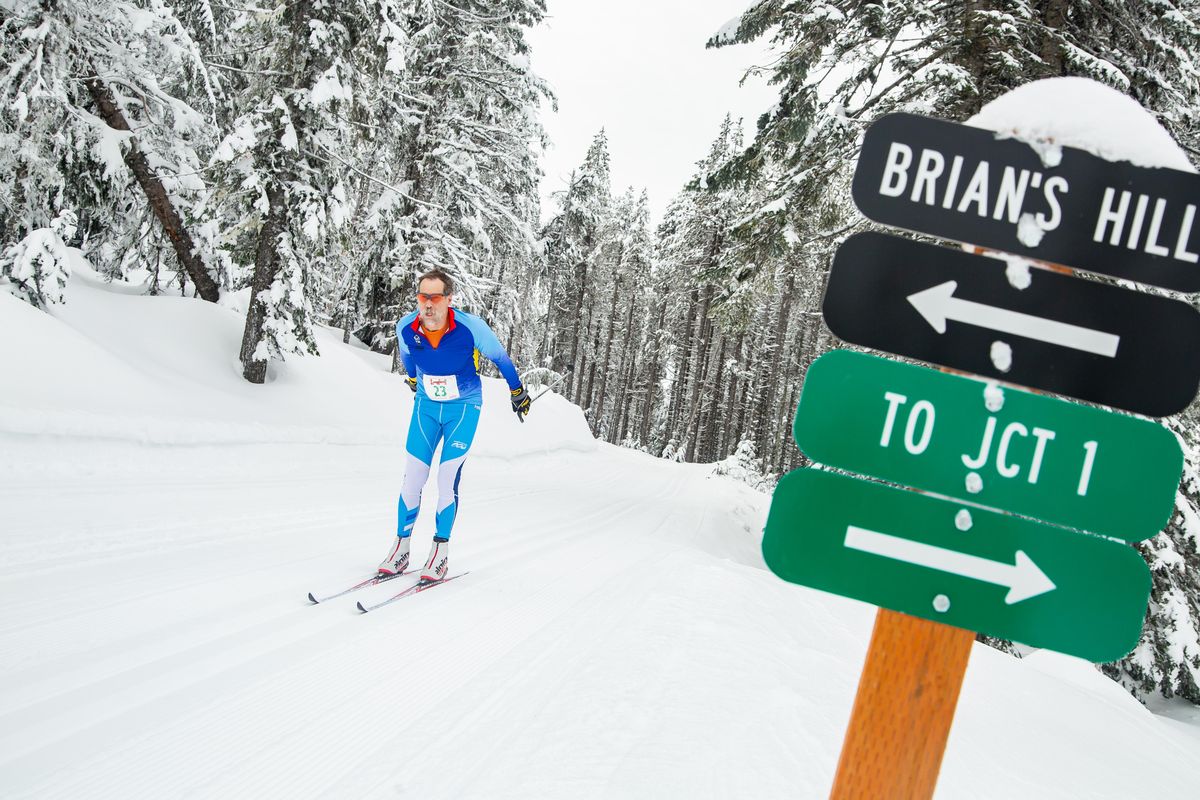At 40, Langlauf continues to offer a fun, welcoming atmosphere for Spokane’s outdoor community

Despite a less-than-inspiring winter so far, near-perfect conditions greeted Langlauf’s 40th birthday on Sunday.
The more than 200 cross-country skiers who participated basked in intermittent sun, cold (but not too cold) conditions, fresh snow and expert grooming at Mount Spokane State Park.

Top honors went to Tyler Reinking, who finished the 10-kilometer race in 28 minutes, 11 seconds, nearly 3 minutes faster than last year’s winning time of 31:04.
Rebecca Dussault, a former Olympian, was the top female finisher with a time of 31:11. As usual, teenagers dominated the rest of the podium.
John DeForest finished in 29:34, followed by Sameer Powers’ 33:09. Meanwhile, teens Bridget Burns and Annaby Kanning took second and third place among female competitors with times of 31:40 and 33:23, respectively.
While those blistering-fast finishes certainly deserve recognition, the tone of the event goes far beyond competition.
“You just see all the smiles on the faces,” said Dave Tewel. “It’s a great time to be out.”
Tewel has participated in more than a dozen Langlauf races since moving to the Spokane area in the late ’70s. In fact, the outdoor access and welcoming community of Spokane’s outdoor community, exemplified by Langlauf, is why Tewel moved to the area in the first place.
Conceived as a Bloomsday on snow 40 years ago, Langlauf hasn’t grown as big as the actual Bloomsday. With participation hovering around 200 most years, everyone more or less knows everyone else, giving the event the feeling of a family reunion, albeit a hyper-fit one. (On average, a 6-foot tall, 175-pound, 40-year-old man burns 900 calories in an hour of cross-country skiing.)
“It’s a community thing,” said race director Tim Ray.
Before and after the race, participants, volunteers and spectators enjoy soup, pastries and coffee provided by sponsors in the Selkirk Lodge. And more than $5,000 in prizes are given out during the award ceremony. The popular Woodies and Woolie category celebrates skiers who wear all-natural clothing and race on classic wood skis.
Sunday was only Chaundra Ward and her daughter Paulina’s second time participating in Langlauf, but they’re already hooked.
“The culture of cross-country skiing is really encouraging,” Ward said. “They want more people to do it. They aren’t so competitive that they see you as a threat.”
Plus, everyone is smiling, basking in a post-race high of endorphins and accomplishment, she said.
Which isn’t to say the race doesn’t – and hasn’t –attracted fierce competition. It was founded by two elite athletes looking for closer-to-home competition. And at least four Olympians or future Olympians have competed over the decades.
Still, the loudest whoops weren’t for the fastest skiers. They were reserved for the 75-and-older finishers.
Lou Slak, 76, was the sole female finisher in that category. She’s competed in about 25 Langlaufs and remembers lobbying race organizers to create a 75-and-older category 15 years ago.
“It’s a community challenge,” she said.